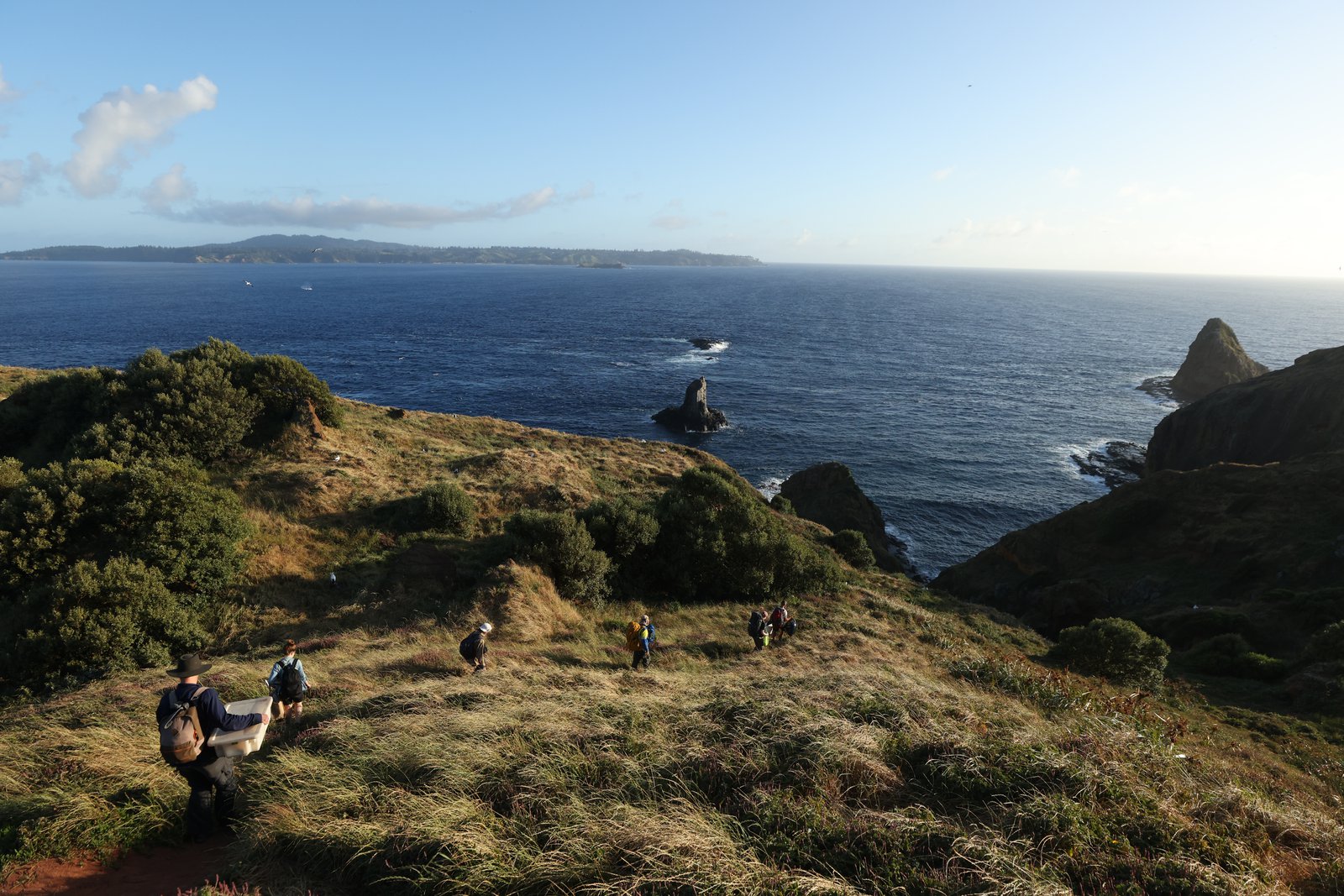Bats, rats and cats – oh my!
To gain a holistic biological and historical picture of an area, both native and introduced species should be studied over time. Recently, our mammalogy team surveyed bats, rats and cats on the Australian Museum-led expedition to Norfolk Island.
Historically, when scientists have surveyed an area, there has been a tendency to focus on native species, rather than invasive species. As a result, we now have very few samples of introduced populations represented in museum collections.
During Phase 1 of the Australian Museum-led expedition to Norfolk Island (October-November 2022), our scientists focused on surveying and studying bats, rats and cats; both native and introduced mammals. In terms of mammal diversity, the fauna of Norfolk Island is dominated by introduced species including feral cats (Felis catus), house mice (Mus musculus), black rats (Rattus rattus) and Polynesian rats (Rattus exulans). As Norfolk Island is a volcanic island, native mammal species are limited – mammals not being great over-water dispersers unless they can fly. For this reason, only bats have naturally found their way to Norfolk Island, but humans have introduced a range of mammal species over time.

During Phase 1 of the Australian Museum-led expedition to Norfolk Island, our scientists focused on surveying and studying bats, rats and cats.
Image: Tom Bannigan© Australian Museum
Our mammalogy team – Dr Mark Eldridge, Dr Sandy Ingleby and Professor Kristofer Helgen – had two aims during the Norfolk Island expedition. The first was to try and identify if Norfolk Island’s only native mammal, the Gould’s Wattled-bat (Chalinolobus gouldii), still resides on the Island. This bat has not been officially recorded on Norfolk Island for over 20 years – and the Australian Museum holds the only known specimens from the Island in its collection. In order to search for the bat, our team deployed ultrasonic bat detectors at 34 sites across Norfolk Island and two on neighbouring Phillip Island. This was the most comprehensive effort yet to try and detect the bat; in addition to the 90,000 sound files recovered from the detectors, our team gathered historic and current bat sighting information from local residents. During community engagement activities throughout the week, our team spoke to many local groups about potential sites and sightings and were invited onto private land to investigate further. Despite these efforts, no bat calls were detected on either Norfolk or Phillip Islands during the survey.

© Pavel German

© Australian Museum
The second aim was to collect samples of the introduced mammal species on the Island. Though invasive species like rats and cats tend to not be collected a great deal by museums, all of these species have had a significant impact on the Island’s biodiversity so it’s important to understand them and document their presence. The team set out Elliot and cage traps in remnant native vegetation and around buildings to document what invasive species were present, and to collect high quality genetic data. Pivotal to understanding where to place traps was local knowledge, including local, Arthur Evans, who permitted our team to set traps on his property.

© Australian Museum
There is increasing interest in documenting introduced species around the world because they tend to parallel human movement and history (as humans introduced them). Hence, a lot about can be learned about human populations based on these data. This is true in the case of Norfolk Island. The Polynesian rat was introduced about 500 years ago with Polynesian settlement; house mice were introduced with convict settlement in 1788; and during WWII or perhaps earlier, the black rat appeared. Each of these introductions have had a major effect on the native flora and fauna, and each has an interesting history in terms of human movement around the globe.
As invasive species are poorly represented in museum collections, there are few to no tissue samples available for genetic studies. So, collecting these specimens has filled a significant gap in global museum collections and has provided material for future studies. It has also established base-line data for Norfolk Island to help answer future research and conservation questions – including steps in potential eradication programs. The tissue from these specimens will provide researchers the opportunity to compare Norfolk Island populations with global populations, helping to unpick the history of the movement of introduced species (and the movement of people) across the centuries. The samples will hopefully help us answer questions regarding genetic diversity; for example, was there a single introduction or were there multiple introductions from multiple sources? There are questions about adaptations of introduced species to novel environments which can’t be answered if we don’t have samples from specific time periods, so our recent collecting work on Norfolk Island helps to establish this ability for now and into the future.
Dr Mark Eldridge, Principal Research Scientist, Terrestrial Vertebrates, Australian Museum.
Dr Sandy Ingleby, Collection Manager, Mammalogy, Australian Museum.
Professor Kristofer Helgen, Chief Scientist and Director, AMRI.
Dr Harry Parnaby, Technical Officer, Mammalogy, Australian Museum.
Meagan Warwick, AMRI & External Partnerships Coordinator, Australian Museum.
More information:
- Hoye, G.A. 2011. The status of microbats on Norfolk Island, southwest Pacific, Pp. 297-307 in: The biology and conservation of Australasian bats (B. Law, P. Eby, D. Lunney and L. Lumsden, eds.). Royal Zoological Society of NSW, Sydney. https://doi.org/10.7882/9780980327243.
- Norfolk Island expedition: Understanding a South Pacific jewel. Australian Museum blog. 2023.
- The beautiful birds of Norfolk Island. Australian Museum blog. 2023.
Acknowledgements
The Australian Museum would like to thank donors and the Australian Museum Foundation for their support of this three-phase expedition. The first phase was made possible by the generosity of the Vonwiller Foundation and Vanessa Tay.









